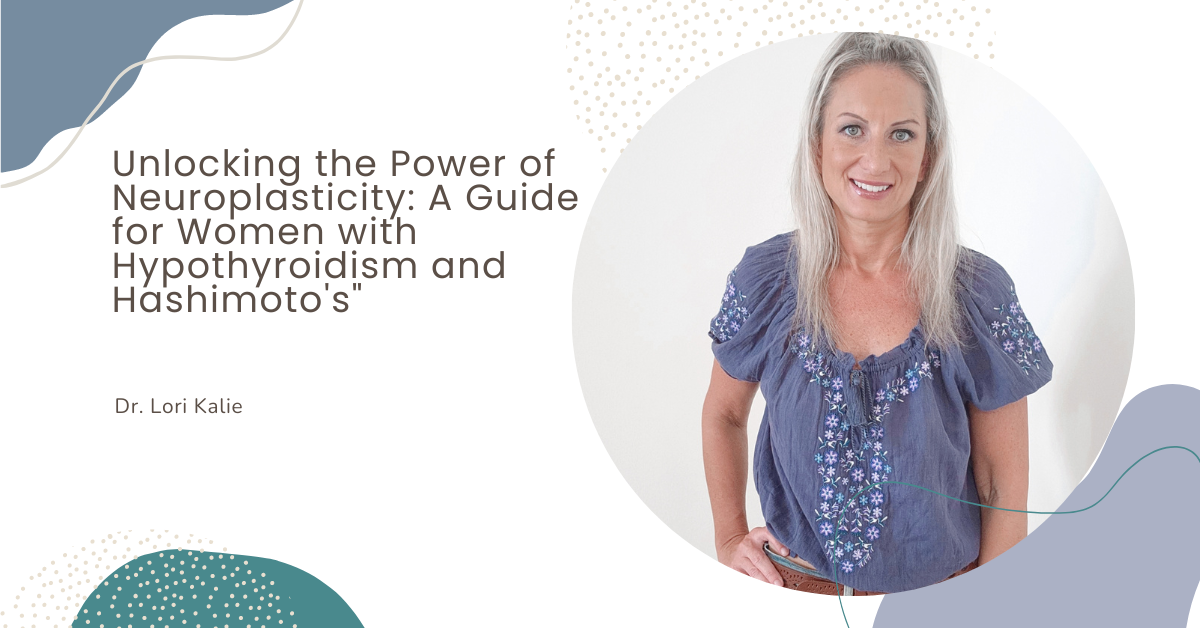Ever feel like your brain is keeping you stuck? If you’re a woman battling hypothyroidism and Hashimoto’s, you know this struggle all too well. But what if we told you there’s a way to break free from those unrelenting brain patterns? Welcome to the world of neuroplasticity – the key to transforming your health and well-being. In this post, we’ll unlock the secrets of neuroplasticity tailored just for you. Get ready to rewire your brain, form lasting habits, and embrace a healthier, happier you!
The Brain-Body Connection:
Your journey to better health begins with understanding the profound connection between your brain and body. In the midst of managing hypothyroidism and Hashimoto’s, you may have encountered symptoms like anxious thoughts, negative self-talk, cravings, and trouble concentrating. These experiences can feel like an endless cycle, often attributed to the brain. However, here’s the empowering truth: you have the power to retrain your brain through neuroplasticity.
Neuroplasticity, the brain’s ability to form new connections and reorganize pathways, is the key to behavior change and breaking free from past patterns. It’s the reason we can recover function after a stroke, learn new skills, and reprogram our thoughts. So, rather than blaming your brain, let’s harness its potential to your advantage.
Neuroplasticity and Habits:
We’re all creatures of habit, but old habits don’t have to be hard to break. To form new, health-promoting habits, you need to retrain your brain through neuroplasticity. The more you engage certain neural pathways, the stronger they become, while others weaken. This is why practicing positive habits little and often is essential. It’s how you train your brain, making those habits stick.
Intrigued by the idea of neuroplasticity? Stay tuned for our next post, where we’ll dive into specific neuroplasticity exercises designed to help you break free from old patterns and build lasting, positive habits.
Practical Neuroplasticity Exercises:
Now, let’s get practical. Here are some specific neuroplasticity exercises tailored to women with hypothyroidism and Hashimoto’s:
1. **Brain Games:** Improve focus, concentration, and memory with activities like Sudoku or brain-training apps.
2. **Art & Music:** Enhance mood and process emotions through creative expression like drawing or singing.
3. **Meditation:** Boost mindfulness, reduce anxiety, and reinforce pathways related to positive emotions.
4. **Deep Breathing:** Reset your nervous system for better concentration, mood, and stress resilience.
5. **Yoga:** Cultivate calmness and resilience by activating the vagus nerve.
Remember, consistency is key. Practice these exercises little and often to reshape your brain and empower your health.
Three More Ways to Improve Neuroplasticity:
In addition to the exercises mentioned above, there are three more ways to supercharge your brain’s neuroplasticity:
– **Exercise:** Physical activity triggers brain-derived neurotrophic factor (BDNF), enhancing neuroplasticity.
– **Nutrition:** Antioxidants in fruits and vegetables protect nerves, supporting neuroplasticity.
– **Restorative Sleep:** Quality sleep is essential for the brain’s plasticity.
Functional medicine recognizes the holistic interplay of all body systems. By improving your brain’s plasticity, you’ll amplify the benefits of your health efforts.
You now hold the key to unlock your brain’s potential for change. Neuroplasticity offers a path to break free from unwanted habits, enhance your mood, and cultivate lasting well-being, all while managing hypothyroidism and Hashimoto’s. Embrace this empowering journey to rewire your brain, one step at a time.






